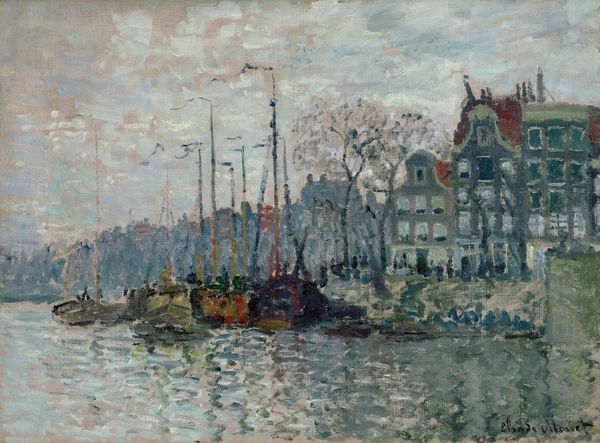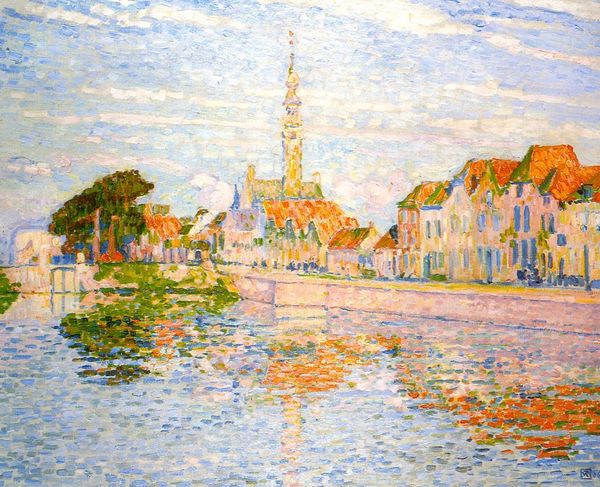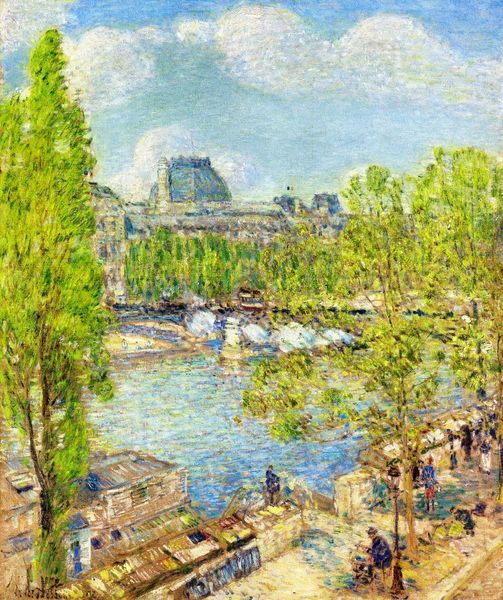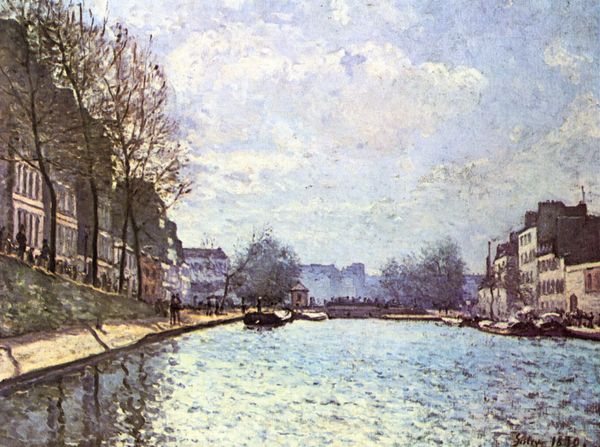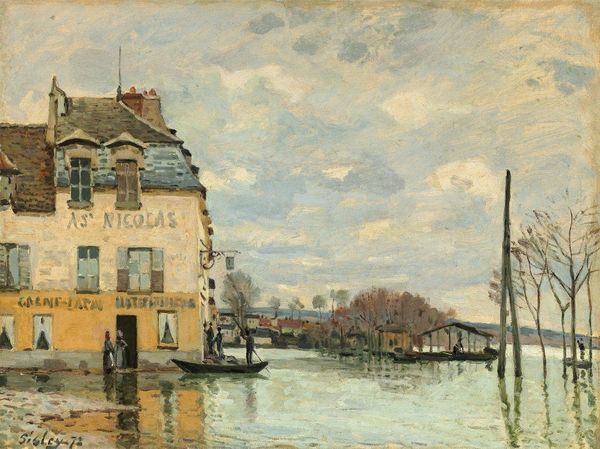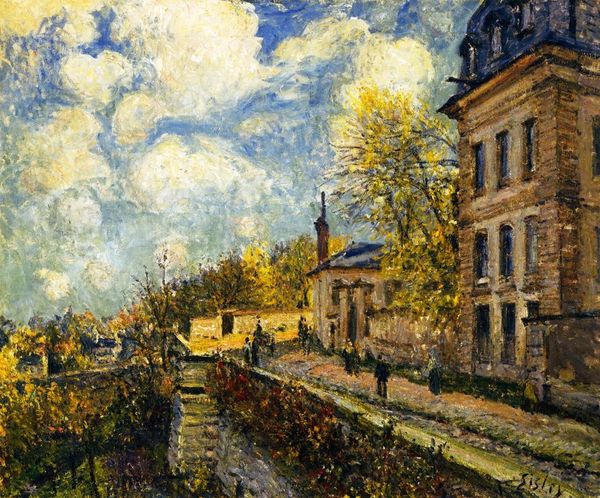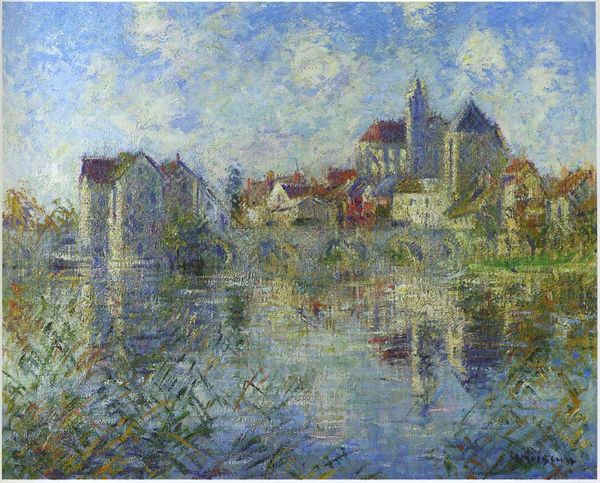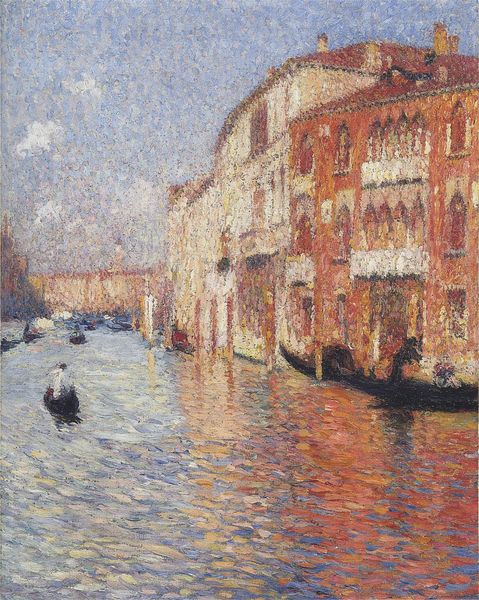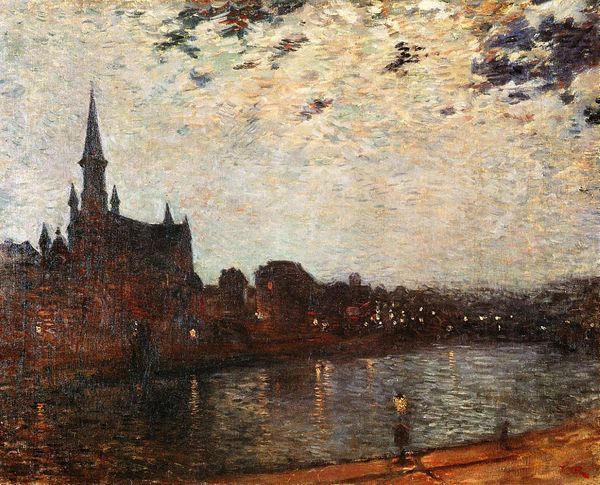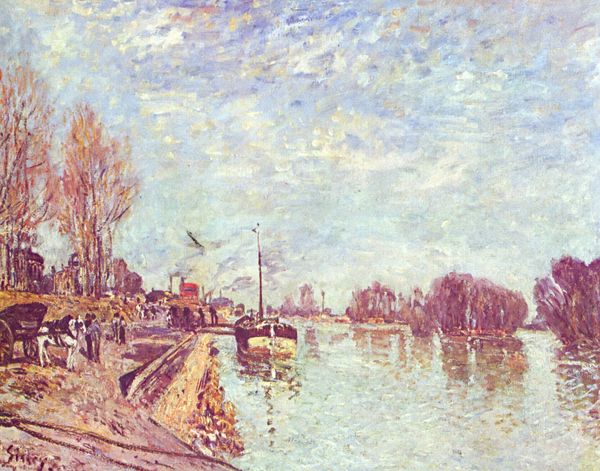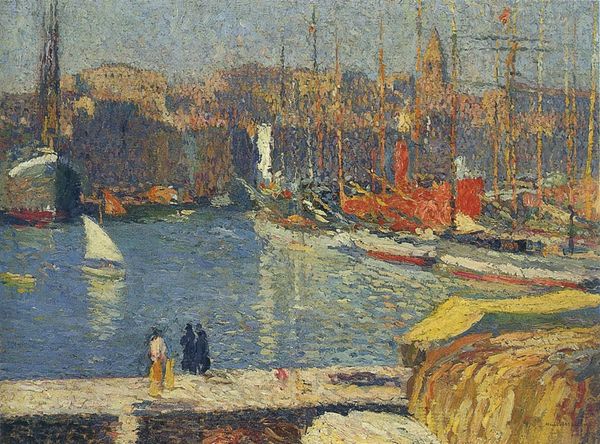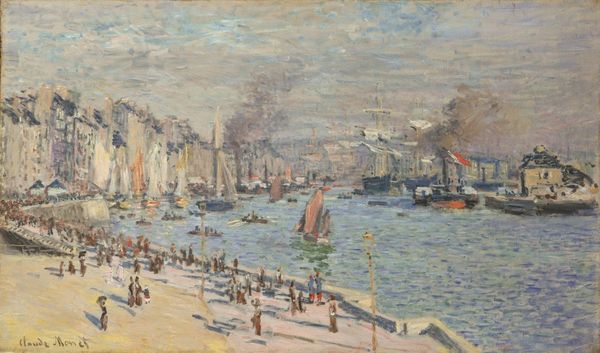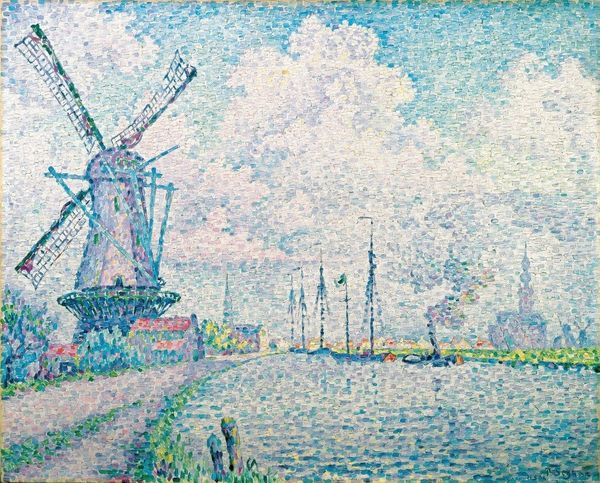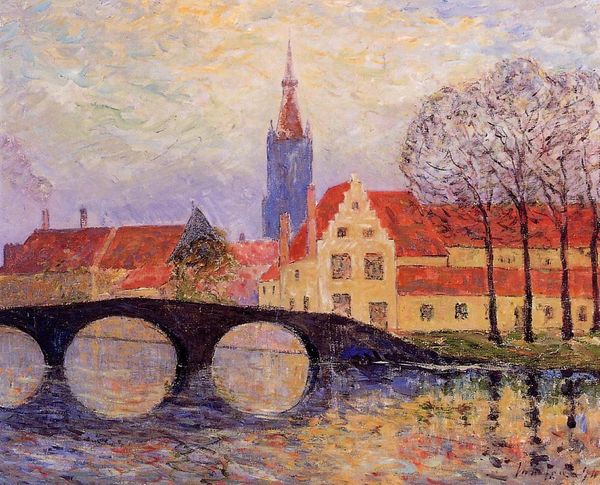
painting, plein-air, oil-paint
#
dutch-golden-age
#
painting
#
impressionism
#
impressionist painting style
#
plein-air
#
oil-paint
#
landscape
#
impressionist landscape
#
oil painting
#
cityscape
Copyright: Public domain
Claude Monet painted 'Zuiderkerk in Amsterdam' during his three-month stay in the city in 1871. Monet, a man of privilege, captured the Dutch landscape during a time when the city was a safe haven for artists fleeing the Franco-Prussian War. Look at how Monet uses rapid brushstrokes to capture the light dancing on the water, almost blurring the line between the city and its reflection. The Zuiderkerk, a 17th-century church, stands tall, a testament to Amsterdam's rich history and religious tolerance. Monet, a privileged man, could move freely and capture this image, which differs so sharply from those who had no place to go during this time. With this painting we see the capacity for hope and renewal, even in times of conflict and uncertainty. Monet’s Amsterdam is a reminder of the interconnectedness of history, identity, and place. It reminds us that even the most fleeting of impressions can reveal deeper truths about ourselves and the world around us.
Comments
No comments
Be the first to comment and join the conversation on the ultimate creative platform.
